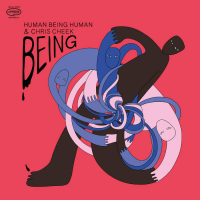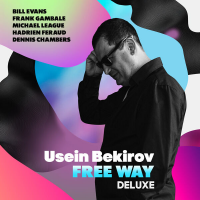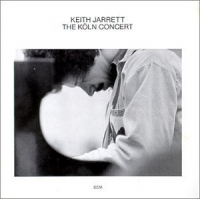Home » Jazz Articles » Album Review » Steve Miller Band: Welcome To The Vault
Steve Miller Band: Welcome To The Vault
In addition, essayist/interviewer David Fricke displays his usual matter-of-fact passion in his prose and it echoes all the more deeply as it' s juxtaposed, over the course of the hundred some pages, with a multitude of vintage photographs of "The Joker" throughout his career (as well as the picturesque site of his archive and some of its contents). Yet one of the most important points may get lost in the vivid depiction of the stop-and-go course of Steve Miller's history, that is, this is but the first of a series of such releases.
Add to that the prevailing blues influence Fricke notes in what is contained on these three CD's and one DVD. Following a general adherence to chronology, the co-producers of Welcome to The Vault (Miller himself and Janice Ginsberg Miller) imbue the collection with its own logic, one that's not wholly tied to his most famous recordings: within these seventy-three cuts, a precious few of those appear due to familiarity affored by their tremendous commercial success, familiar territory covered via the first release on his Miller's own Sailor Records label imprint, Ultimate Hits Deluxe Edition (Capitol/UMe/Sailor, 2017).
A single corresponding compact disc of thirteen tracks, Selections From The Vault, contains roughly the same proportion of previously-unreleased content as the companion piece, those in addition to immediately recognizable titles like "Jet Airliner" and "Fly Like An Eagle" that appear in alternate and sometimes (as with the latter) radically different versions. Similarly rare live and studio recordings otherwise dominate of Welcome To The Vault and there's every reason to think Steve Miller spent as much time choosing and organizing them to accurately mirror the fifty-plus year arc of his endeavors. In doing so, he refuses to indulge in excessive hubris, but rather justifiable pride: 'Maurice' (as he once referred to himself in song) is as intent on capturing the spirit as much as—or in some cases more than—the precision in the musicianship on outtakes like "Tain't It The Truth." Meanwhile, the implicit skill of his band leadership permeates the proceedings: in this particular context, witness the litany of names in the track-by-track credits, especially how many come and go and come back again (not just bassist Gerald Johnson: composer/keyboardist//vocalist Ben Sidran was a regular accompanist and songwriting partner of Miller's fledging SMB).
The preponderance of blues (even in an accompanying role for Chuck Berry at Fillmore West on "It Hurts Me Too") and acoustic sounds ("Seasons," "Wintertime") may startle listeners familiar only with Steve Miller's hits. And even long-time followers who witnessed his sets of wooden music in the Seventies (a reminder of which appears on the DVD) may still wonder with delight at the stripped-down likes of "Kow Kow Calculator." But moments such "Super Shuffle" from 1967 (which reappears on the DVD in a short excerpt from the SMB set at the Monterey Pop Festival) are revelatory and not just because Les Paul's god son rarely assumed the guitar hero spotlight: his touch, feel and imagination practically define the concept of 'shredding." Perhaps only fanatics who still worship Eric Clapton could effectively argue the Texas transplant's mid-tempo arrangement of Robert Johnson's "Crossroads" doesn't cut Slowhand's during his days leading Derek and the Dominos as on Live at the Fillmore (Polydore, 1994).
Notwithstanding a fascination with technology that led Miller to the early use of the echoplex (and even title a tune accordingly) and the Roland synthesizer, his adherence to quality sound on Welcome To The Vault did not lead him to impart the set with high tech features like 5.1 Surround Sound or Dolby Atmos audio. Perhaps that's because, with sonic sources varying almost wildly over the course of all these largely unreleased selections (including the video from a 1974 appearance during Don Kirshner's Rock Concert), such enhancements might be moot at best and all for naught at worst. Like the 1968 version of "Living In The USA," examples of 'finished products,' however, ring loud and clear. even in the otherwise ever-so-slight form such as "Abracadabra" (included for good measure in a slick 1982 performance clip).
The comprehensive but nonetheless subtle nature of most of what's inside Welcome to The Vault nevertheless begs the question of how broad its potential audience might be. Certainly Steve Miller's most loyal fanbase should be delighted with what's here, even as the very expanse of material (not to mention its rootsy authenticity) may be lost on owners of previously-issued, now out-of-print compendiums like the otherwise ostensibly wide-ranging (at the time) Box Set (Capitol, 1994).
Yet even as expansive as is this set, Steve Miller only whets the appetite of those longstanding devotees. And that is exactly that demographic for whom additional archival exhumations, concentrating as much (or more) on various earlier phases of this musician's career, certainly will have an attraction equal to, or perhaps even greater than, the later ones. For instance, the man known to be outspoken to a fault—see his screed on the Rock and Roll Hall of Fame for instance—sounds wry and self-effacing on a drastically re-arranged "Take The Money And Run." And he is comparably respectful and affectionate for the purposeful tribute to T-Bone Walker that closes the set: dual offerings "Lollie Lu" recorded over sixty-years apart, one by the icon himself and one by his pedigreed admirer.
As much territory as Steve Miller so creatively covers on his Welcome To The Vault, he still leaves plenty of ground left to explore. As Fricke notes, through an underlying theme in an essay drawn extensively from interviews with the self-professed "pompitous of love" himself, the story he tells isn't just his own, but the story of the music upon which he so dotes.
Track Listing
CD 1: Blues with a Feeling; Don't Let Nobody Turn You Around; Super Shuffle; It Hurts Me Too; Industrial Military Complex He; Living in the USA; Kow Kow Calculator; Going to Mexico; Quicksilver Girl; Jackson-Kent Blues; Crossroads; Hesitation Blues; Seasons; Say Wow!; Never Kill Another Man. CD 2: The Gangster is Back; Space Cowboy;Space Cowboy;The Joker; The Lovin' Cup; Killing Floor; Evil; Echoplex Blues; Rock'n Me; Rock'n Me; Tain't it the Truth; Freight Train Blues; True Fine Love; The Stake - Alternate Version; My Babe - Alternate Version; That's the Way It's Got to Be; Double Trouble; Love is Strange; All Your Love. CD 3: I Wanna Be Loved; Fly Like an Eagle; Space Intro; Fly Like an Eagle; The Window; Mercury Blues; Jet Airliner; Take the Money and Run; Dance, Dance, Dance; Swingtown ; Winter Time; Who Do You Love?; Abracadabra; Macho City; Take the Money and Run; Bizzy's Blue Tango; Lollie Lou; Lollie Lou. DVD: Monterey International Pop Festival – 1967: Mercury Blues; Super Shuffle. The Fillmore West - Dutch TV Show El Dorado (Pik-In) – 1970; Kow Kow Calculator; Space Cowboy. Don Kirshner's Rock Concert – 1973: Star Spangled Banner; Living in the USA; Space Cowboy; Mary Lou; Shu Ba Da Du Ma Ma Ma Ma; The Gangster is Back; The Joker; Come on in My Kitchen; Seasons; Fly Like an Eagle. Living in the USA (Reprise). ABC In Concert with James Cotton – 1974: Just a Little Bit. Pine Knob, Michigan – 1982: Abracadabra. Steve Miller and Les Paul at Fat Tuesday's – 1990: I Wanna be Loved; CC Rider. Live from Austin City Limits – 2011: Fly Like an Eagle; Living in the USA.
Personnel
Steve Miller Band
band / ensemble / orchestraSteve Miller: vocals, guitars, synth keyboards, echoplex, bass, drum machine; David Denny: guitars; Boz Scaggs: vocals, guitar; Curley Cooke: vocals, guitars; Les Dudek: slide guitar; Jim Miller: guitar; Chuck Berry: guitar, vocals; T-Bone Walker: vocals; guitar; Jimmie Vaughan: guitar; Byron Allred: keyboards, synth keyboards; Voctor Wooten: keyboards; Jachym Young: Hammond B3, piano; Charles Calmese: bass; Michael Coleman: guitar; Les Paul: guitar; “Professor” Eddie Lusk: piano; Dickie Thompson: keyboards; Shelly Berg: piano; Mike Flanigin: organ; John McFee: dobro; Norton Buffalo: harmonica; Ross Valory: bass, vocals; Gerald Johnson: bass; Bobby Winkelman: bass, vocals; Lonnie Turner: bass; Tim Davis: vocals, drums; Gary Mallaber: drums; John King: drums, vocals; Noel Neal: bass; Kenny Lee Lewis: bass; Gary Mazsaroppi: double bass; Yasushi Nakamura: double bass; Kenny Johnson: drums; Eric Harland: drums; Sonny Emory: drums; Gordy Knudtson: drums; Michael Rodriquesz: trumpet; Patrick Bartly: also saxophone; Craig Handy: tenor saxophone; Lauren Sevian: tenor saxophone; Jules Broussard: saxophone; Brianna Thomson: vocals.
Album information
Title: Welcome To The Vault | Year Released: 2019 | Record Label: Capitol/UMe/Sailor
Tags
About Steve Miller Band
Instrument: Band / ensemble / orchestra
PREVIOUS / NEXT
Support All About Jazz
 All About Jazz has been a pillar of jazz since 1995, championing it as an art form and, more importantly, supporting the musicians who make it. Our enduring commitment has made "AAJ" one of the most culturally important websites of its kind, read by hundreds of thousands of fans, musicians and industry figures every month.
All About Jazz has been a pillar of jazz since 1995, championing it as an art form and, more importantly, supporting the musicians who make it. Our enduring commitment has made "AAJ" one of the most culturally important websites of its kind, read by hundreds of thousands of fans, musicians and industry figures every month.



















